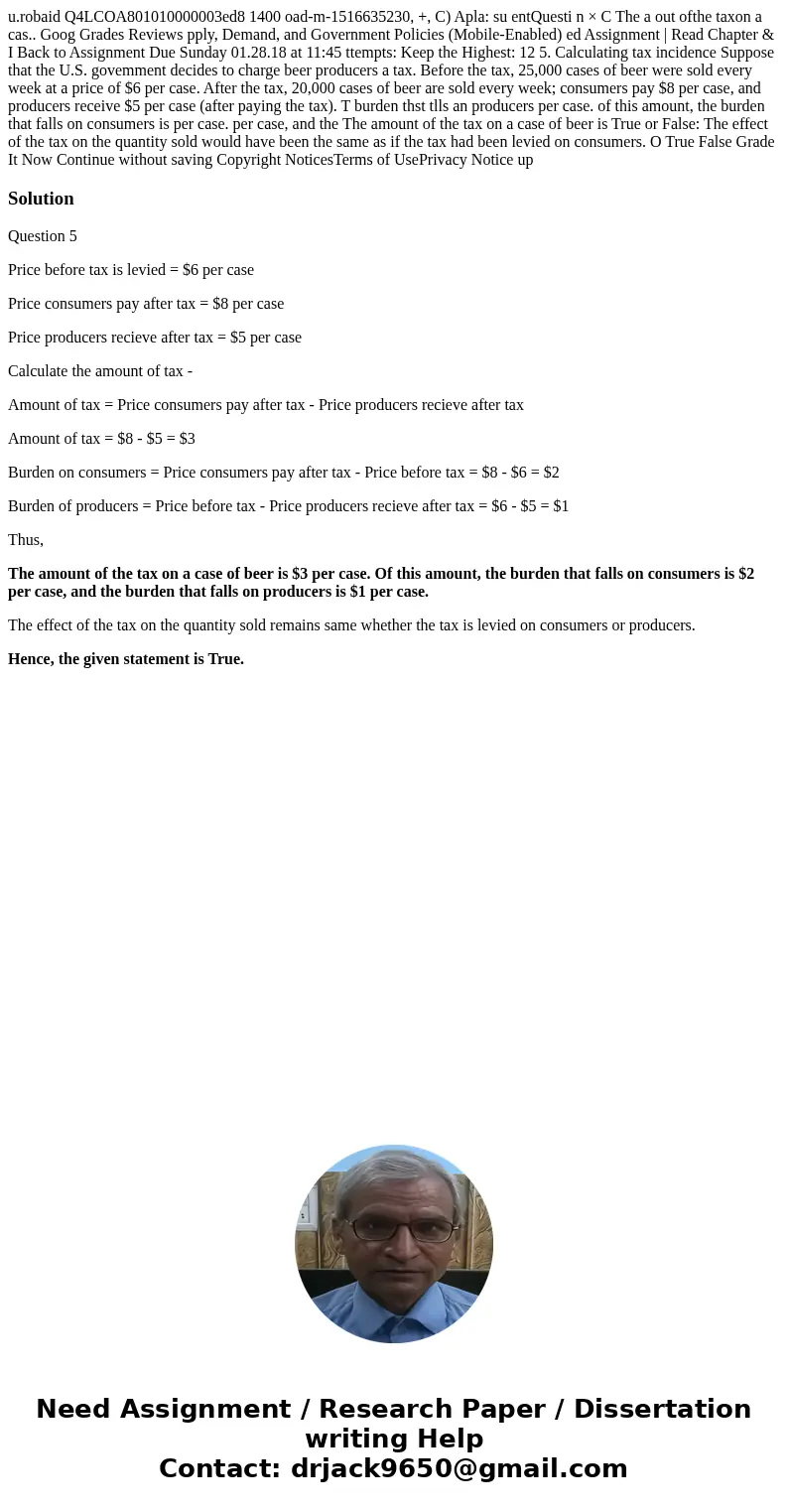u.robaid Q4LCOA801010000003ed8 1400 oad-m-1516635230, +, C) Apla: su entQuesti n × C The a out ofthe taxon a cas.. Goog Grades Reviews pply, Demand, and Government Policies (Mobile-Enabled) ed Assignment | Read Chapter & I Back to Assignment Due Sunday 01.28.18 at 11:45 ttempts: Keep the Highest: 12 5. Calculating tax incidence Suppose that the U.S. govemment decides to charge beer producers a tax. Before the tax, 25,000 cases of beer were sold every week at a price of $6 per case. After the tax, 20,000 cases of beer are sold every week; consumers pay $8 per case, and producers receive $5 per case (after paying the tax). T burden thst tlls an producers per case. of this amount, the burden that falls on consumers is per case. per case, and the The amount of the tax on a case of beer is True or False: The effect of the tax on the quantity sold would have been the same as if the tax had been levied on consumers. O True False Grade It Now Continue without saving Copyright NoticesTerms of UsePrivacy Notice up
Question 5
Price before tax is levied = $6 per case
Price consumers pay after tax = $8 per case
Price producers recieve after tax = $5 per case
Calculate the amount of tax -
Amount of tax = Price consumers pay after tax - Price producers recieve after tax
Amount of tax = $8 - $5 = $3
Burden on consumers = Price consumers pay after tax - Price before tax = $8 - $6 = $2
Burden of producers = Price before tax - Price producers recieve after tax = $6 - $5 = $1
Thus,
The amount of the tax on a case of beer is $3 per case. Of this amount, the burden that falls on consumers is $2 per case, and the burden that falls on producers is $1 per case.
The effect of the tax on the quantity sold remains same whether the tax is levied on consumers or producers.
Hence, the given statement is True.

 Homework Sourse
Homework Sourse